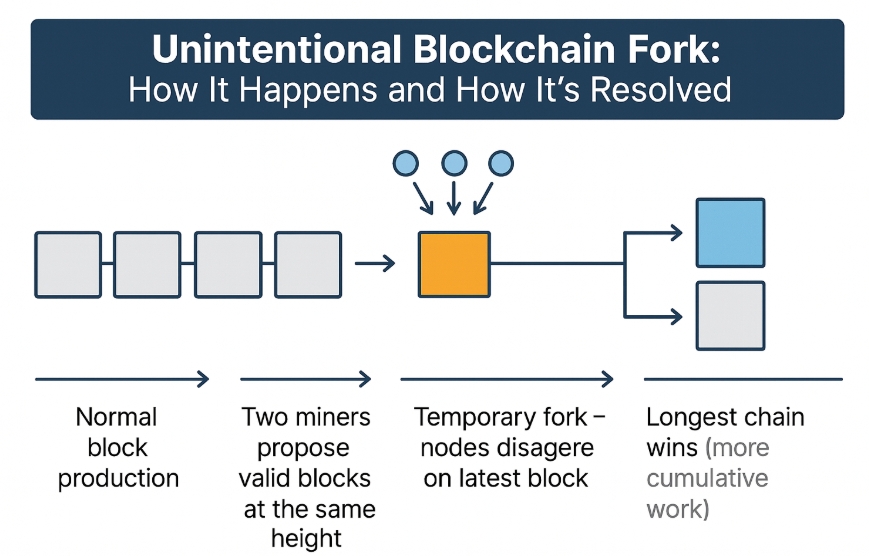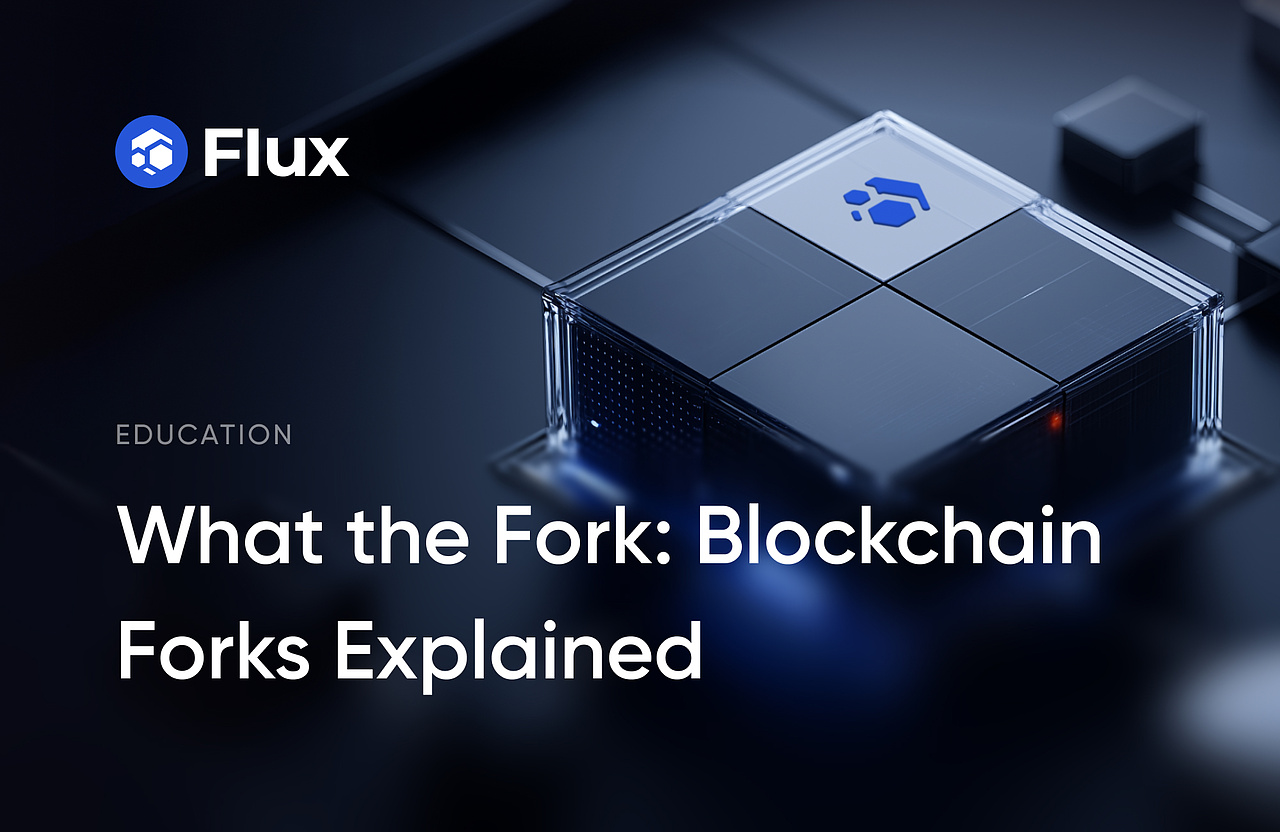In anticipation of Flux’s upcoming fork, which will transition the ecosystem to the Proof of Useful Work (PoUW) v2 consensus mechanism, we thought it would be beneficial to explore what a blockchain fork is and its implications for a network. Let’s dive in!
Intentional vs Unintentional Forks
Simply put, a fork is a fundamental change in a blockchain’s protocol that shifts how it works. Forks can occur intentionally when developers decide to implement changes to a blockchain’s defined ruleset, such as adjustments to token supply or block emissions, or when a network receives an upgrade, such as node infrastructure updates.
These are deliberate actions, typically voted on by a blockchain’s community to improve the network, either through changes in operating rules and procedures or upgrades to the network’s hardware layer.
Conversely, forks can occur unintentionally or accidentally when latency causes two blocks to be produced at the same height simultaneously. This results in a temporary split in the chain’s transaction chronology, leading to confusion about which one should be ordered first.
Both blocks are valid; they just reference the same previous block and were proposed by two different miners at nearly the same time. Network delays prevented the initial proposals from reaching all validator nodes in chronological order; as a result, some nodes recognized one block as the latest valid block, while others recognized the other as valid, leading to two competing branches of the blockchain, which form a fork.
The temporary split in the transaction history is resolved when one of the two branches becomes longer, as miners continue to propose new blocks that represent a larger cumulative share of proven work. Once one branch becomes longer than the other, the shorter branch’s blocks are abandoned (referred to as orphaned blocks) and nodes only store states that reflect the longer branch.

Types of Forks
There are two types of blockchain forks: soft forks—backward compatible adjustments to a network’s operating rules—and hard forks—significant non-backward compatible upgrades to a chain’s infrastructure.
Soft Forks
Flux’s transition to PoUW v2 is a soft fork, where block production and transaction validation will shift from GPU mining to FluxNodes. Soft forks are backward-compatible (new updates work with old systems) updates to a blockchain’s protocol or consensus rules, allowing legacy nodes to validate blocks produced with the latest ruleset.
New rules implemented in a soft fork, such as changes to block emissions and propagation times in the case of PoUW v2, invalidate new transactions approved after the fork if they do not comply with the changes, not nodes themselves, which means that nodes that have not updated with the latest rules can still participate in the network.
Soft forks introduce minor updates and bring tighter operating regulations to a network. The Flux fork required a majority vote from community nodes to pass.
Hard Forks
Hard Forks represent a significant change in blockchain infrastructure and mechanics that can permanently split the network, resulting in a new chain diverging from the old one. The infrastructure upgrades implemented are non-backward-compatible (new updates do not work with old systems), requiring all nodes to adopt the changes or else the split occurs.
Hard forks modify a blockchain’s underlying code, where new code introduced is incompatible with the previous setup. This incompatibility means that the last infrastructure node cannot validate new transactions unless it upgrades.
Hard forks necessitate substantial software upgrades for nodes. When a portion of network nodes don’t participate in the upgrade, the blockchain splits into two separate chains, each with its own unique state, technical specifications, and transaction history. This can also lead to the creation of a new cryptocurrency.
The goal of a hard fork is to create a new blockchain with enhanced functionality, improved efficiency, more robust security, and additional features. However, due to varying node operator philosophies, some will favor the new chain. In contrast, others will continue to prefer the old setup, a phenomenon that has been observed with Ethereum and Ethereum Classic.
Conclusion
Both soft and hard blockchain forks are fundamental ways that a decentralized network upgrades. Blockchain forks can occur intentionally with planned upgrades, or accidentally if blocks with the same height are proposed simultaneously due to the network latency.
Soft forks, such as Flux’s transition to PoUW v2, introduce backward-compatible changes to a blockchain’s operating rules, allowing nodes that haven’t upgraded to participate in transaction validation.
Hard forks introduce significant, non-backward-compatible upgrades to a blockchain’s underlying code and node infrastructure. These upgrades can permanently split the network if all nodes don’t upgrade, creating two unique blockchains, each with its own state.
Understanding blockchain forks and how they strike a balance between innovation and network compatibility will be beneficial when considering Flux’s upcoming fork. Be sure to check out our blog post outlining PoUW v2. For node operators, review the steps for upgrading your hardware and be ready for the fork. The future runs on Flux.
